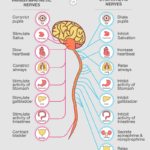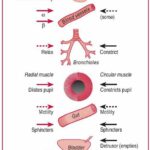Nursing, Bachelor's Degree - Aimed at Immigrants Nursing degree in Finland at Metropolia UAS and Tampere UAS Metropolia University of Applied Sciences and Tampere University of Applied Sciences offer a bilingual (English and Finnish) Nursing degree program for immigrants. The program is designed to train nursing professionals who are capable of working in health care … [Read more...] about Bilingual nursing program for immigrants in Finland
Comprehensive Guide to ARDMS Certification and Exam Requirements
ARDMS Certification: A Comprehensive Guide Introduction The American Registry for Diagnostic Medical Sonography (ARDMS) is a non-profit organization that provides certification for diagnostic medical sonographers. ARDMS certification is recognized and respected worldwide, and it demonstrates a sonographer's expertise and competence in the field. In this article, we … [Read more...] about Comprehensive Guide to ARDMS Certification and Exam Requirements
Nervous System Physiology: Sympathetic and Parasympathetic Nervous System
Nervous System Physiology Sympathetic and Parasympathetic Nervous System The physiology of the nervous system involves the sympathetic and parasympathetic systems. The sympathetic system triggers the "fight-or-flight" response, which prepares the body for intense physical activity. This system causes the expected bodily changes to occur. On the other hand, the … [Read more...] about Nervous System Physiology: Sympathetic and Parasympathetic Nervous System
Comparison of Sympathetic vs Parasympathetic Blood Vessels
Comparison of Sympathetic and Parasympathetic Effects on Blood Vessels Nervous System Physiology Sympathetic and Parasympathetic Nervous System In nursing education guidelines, it is important to understand the difference between sympathetic and parasympathetic blood vessels. Under sympathetic stimulation, blood vessels constrict, leading to an increase in pressure. In … [Read more...] about Comparison of Sympathetic vs Parasympathetic Blood Vessels
Au Pair Work Permit in Sweden
Au Pair Work Permit in Sweden Job Advertisement and Immigration Information for Au Pairs in Sweden We are looking for candidates who are interested in working as an au pair in Sweden. If you are a citizen of a country outside the EU, have a valid passport, and meet the age criteria of being between 18-30 years old, you can apply for a residence permit. Citizens of certain … [Read more...] about Au Pair Work Permit in Sweden




